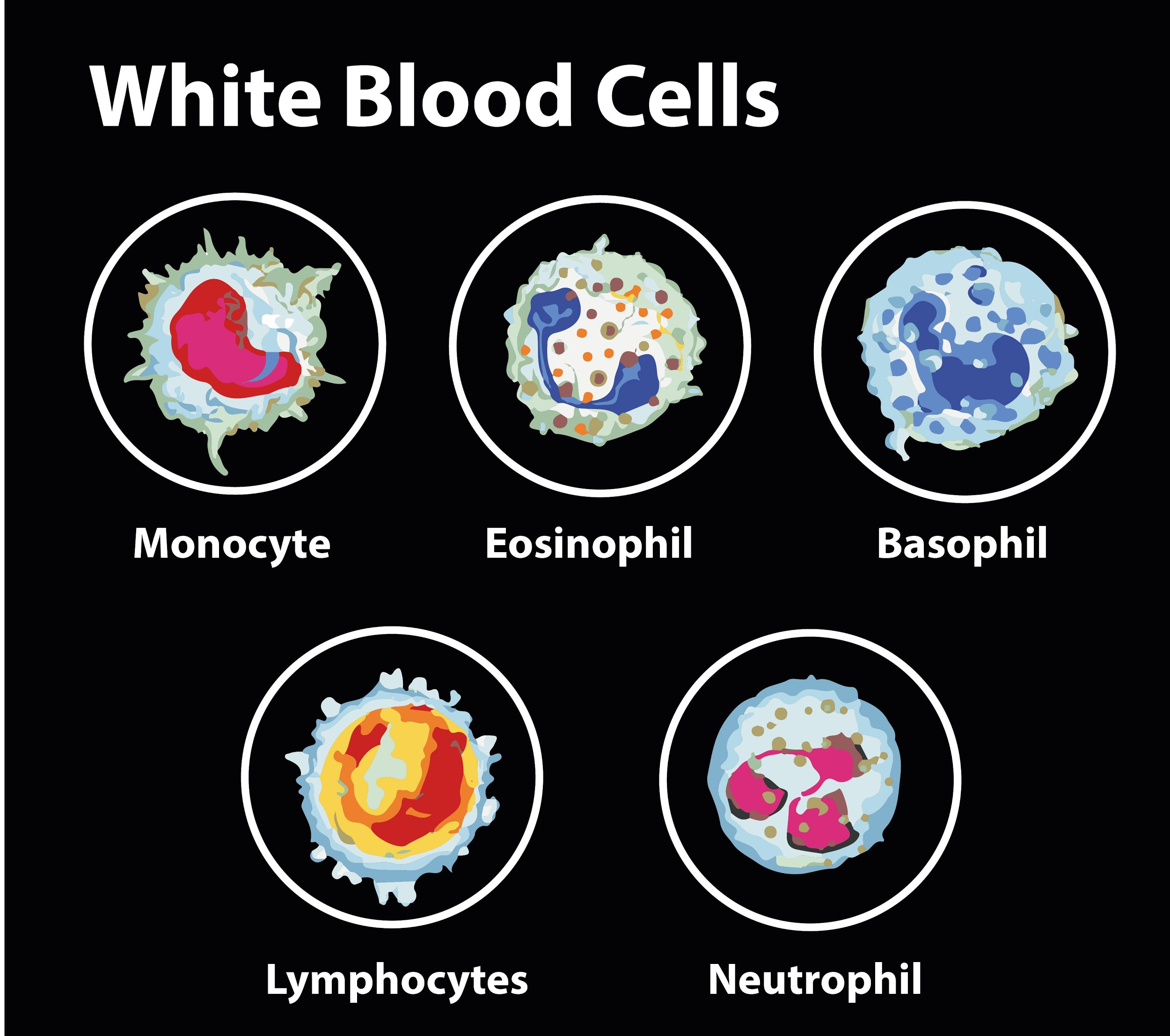
Life span of human WBC is normally
A. 13-20 days
B. 80-90 days
C. 100-120 days
D. 20-30 days
Answer
494.7k+ views
Hint: The types of blood cells that provide immunity to our body and prevent diseases. These are colorless and survive for two weeks.
Complete answer:
WBCs or White Blood Cells or erythrocytes are the type of blood cells that are colourless as they do not contain haemoglobin. They survive in the body for around 13 to 20 days and then are destroyed by the lymphatic system.
Additional Information: There are two major types of WBC
Granulocyte: This group contains Eosinophils, basophils, neutrophils
Agranulocyte: This group contains Monocytes and lymphocytes. Out of these neutrophils are highest in number (60% of total).
These cells provide immunity to our body by producing antibodies against infection and carry out different functions. Their shape is irregular and contains the nucleus. On average, they are present very less in number and are about 6000-8000 per cubic metre. These are manufactured by the bone marrow. They are found in both the cardiovascular system and the lymphatic system. They contribute to 1% of the blood volume.
The function of different WBCs
-Monocytes neutrophils help in phagocytosis.
-Basophils are responsible for the inflammatory reactions and the secretion of histamine, serotonin etc.
-Eosinophils prevent infections and are related to allergies.
-Lymphocytes which are of two types-B and T are the ones who have the charge for the immune response.
So, the correct answer is ‘13-20 days'
Note: Phagocytosis is the process carried out by the WBC in which they engulf the foreign particles like bacteria, dying cells etc in order to prevent damage to the organism. The lymphatic system excludes the RBCs and constitutes tonsils, spleen, adenoids, thymus etc. When WBCs undergo uncontrolled division it is Leukemia or blood cancer.

Complete answer:
WBCs or White Blood Cells or erythrocytes are the type of blood cells that are colourless as they do not contain haemoglobin. They survive in the body for around 13 to 20 days and then are destroyed by the lymphatic system.
Additional Information: There are two major types of WBC
Granulocyte: This group contains Eosinophils, basophils, neutrophils
Agranulocyte: This group contains Monocytes and lymphocytes. Out of these neutrophils are highest in number (60% of total).
These cells provide immunity to our body by producing antibodies against infection and carry out different functions. Their shape is irregular and contains the nucleus. On average, they are present very less in number and are about 6000-8000 per cubic metre. These are manufactured by the bone marrow. They are found in both the cardiovascular system and the lymphatic system. They contribute to 1% of the blood volume.
The function of different WBCs
-Monocytes neutrophils help in phagocytosis.
-Basophils are responsible for the inflammatory reactions and the secretion of histamine, serotonin etc.
-Eosinophils prevent infections and are related to allergies.
-Lymphocytes which are of two types-B and T are the ones who have the charge for the immune response.
So, the correct answer is ‘13-20 days'
Note: Phagocytosis is the process carried out by the WBC in which they engulf the foreign particles like bacteria, dying cells etc in order to prevent damage to the organism. The lymphatic system excludes the RBCs and constitutes tonsils, spleen, adenoids, thymus etc. When WBCs undergo uncontrolled division it is Leukemia or blood cancer.

Latest Vedantu courses for you
Grade 11 Science PCM | CBSE | SCHOOL | English
CBSE (2025-26)
School Full course for CBSE students
₹41,848 per year
Recently Updated Pages
Master Class 11 Business Studies: Engaging Questions & Answers for Success

Master Class 11 Economics: Engaging Questions & Answers for Success

Master Class 11 Accountancy: Engaging Questions & Answers for Success

Master Class 11 Computer Science: Engaging Questions & Answers for Success

Master Class 11 English: Engaging Questions & Answers for Success

Master Class 11 Maths: Engaging Questions & Answers for Success

Trending doubts
Which one is a true fish A Jellyfish B Starfish C Dogfish class 11 biology CBSE

Difference Between Prokaryotic Cells and Eukaryotic Cells

1 ton equals to A 100 kg B 1000 kg C 10 kg D 10000 class 11 physics CBSE

1 Quintal is equal to a 110 kg b 10 kg c 100kg d 1000 class 11 physics CBSE

One Metric ton is equal to kg A 10000 B 1000 C 100 class 11 physics CBSE

How much is 23 kg in pounds class 11 chemistry CBSE




